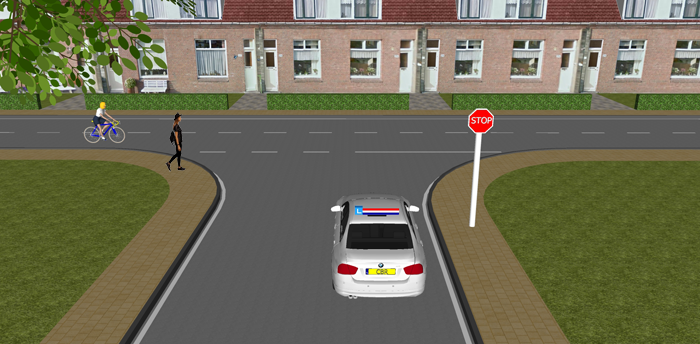Priority controlled junctions






If you approach a junction where sign B1 is placed, you are driving on a priority road and you should be given priority by drivers from left and right. As long as you drive on the priority road, you should get priority from drivers from left and right.
If you approach a junction where the signs B3, B4 or B5 are placed, you approach a priority controlled junction. You only get priority at the junction where these signs are placed. Sign B3 gives you priority to drivers from left and right. Sign B4 gives you the right of way to drivers coming from the left. And at sign B5 you get priority from drivers coming from the right.
If you approach a junction marked B6 or B7, you are approaching a priority controlled junction. In that case, you should give priority to drivers on the intersecting road. If sign B6 is placed, you do not have to stop at the junction if there is no traffic approaching. If sign B7 is placed, you always have to stop before the junction before you can drive on.
When approaching a priority road, you must give way to drivers on the intersecting road. SO NOT TO PEDESTRIANS!

In the image, the driver of the white car have to give priority to the cyclist. This is because the driver of the car is approaching a priority road and must give way to drivers on the intersecting road.
However, the driver of the car does not have to give way to the pedestrian There may be a STOP sign, but a pedestrian is still not a driver.
